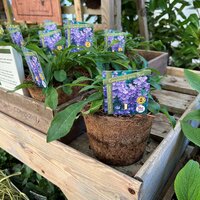Pests & Diseases Hints & Tips
How we deal with Pests and Diseases - Integrated Pest Management
Experienced gardeners know the importance of managing common pests and diseases that can damage fruit, herbs, vegetables, and other plants. Here at Ashtead Park, we take the presentation of healthy plants very seriously, and primarily source plants from the best nurseries in the UK.
All our growers practice Integrated Pest Management, which is a long-term strategy focusing on prevention of pests or their damage through a combination of techniques such as biological control, habitat manipulation, modification of cultural practices, and use of resistant varieties.
Pesticides are used very little and only after monitoring indicates they are needed according to established guidelines. Treatments are made with the goal of removing only the target organism. Pest control materials are selected and applied in a manner that minimizes risks to both human health, beneficial and non-target organisms, and, of course, the environment.
With IPM, you take actions to keep pests from becoming a problem by buying disease resistant plants that are healthy enough to resist pest attacks. Rather than simply eliminating the pests you see right now, IPM means you’ll look at environmental factors that affect the pest and its ability to thrive. Armed with this information, you can create conditions that are unfavourable for the pest.
We take Integrated Pest management very seriously here at Ashtead Park and adhere to a 5-point strategy which can also be used in your own garden.
1. Identify the pest. Many garden insects can be beneficial. Put up yellow sticky traps or pheromone traps to catch pests for identification.
2. Monitor its activity. Sometimes a pest will appear and fly off before action needs to be taken.
3. Determine action thresholds. An action threshold is the point at which further damage is considered intolerable and some kind of control needs to be implemented.
4. Explore treatment options. Many pests can be satisfactorily controlled without immediately spraying a pesticide.
5. Evaluate results. Return to step 1.

